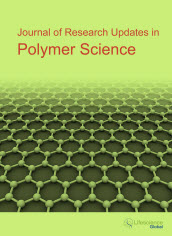jrups
|
|
Abstract: Mechanical characterization of polymeric biomaterial scaffolds is essential to allow biomaterials that interface with tissues and tissue engineered constructs to be developed with appropriate mechanical strength. However, the fragility of these materials makes their mechanical characterization in a quantitative manner highly challenging. Here we report an overview of testing techniques for the characterization of mechanical properties of films, membranes, hydrogels and fibers commonly used as scaffolds in tissue engineering applications. Keywords: Optoelectronic, Ferroelectric, Piezeoelectric, Superparamagnetic, Nanocomposites.Download Full Article |
|
|
Abstract: Spontaneous assembly of nanoparticles onto a surface is a promising bottom-up concept for the fabrication of new functional materials that can be used for various applications in the nanotechnology. In this paper, we describe a system based on gold/polystyrene (Au/PS) Janus particles arranged onto Au self-assembled monolayer (SAM) of 1-dodecanthiol (NDA). The micro-size Au/PS Janus particles are self-assembled onto Au surface and are dissolved into polystyrene (PS) nanoparticles. The SAM of NDA plays two different roles; it dissolves the original Au/PS Janus particles and organizes the PS nanoparticles onto the Au surface. Overall, our proposed method for the assembly of large-scale area nanoparticles can be extended for further uses in the surface science. Keywords: Self-assembled monolayer, Polymeric nanoparticles, Spontaneous arrangement, Polystyrene, Surface chemistry, Janus particles.Download Full Article |
|
|
Abstract: Cellulose aerogel is a fascinating material with high porosity, low density and biocompatibility. However, cellulose aerogel lacks sufficient thermal stability. Recombination between cellulose aerogel with silica is efficacious for enhance the cellulose aerogel’s thermal stability.This work described a simple and efficient approach to the cellulose/silica composite aerogel via a dropwise manner, using tetraethoxysilane as silicon source and NaOH solution as cellulose solvent. The result showed that the thermal stability of cellulose aerogel was enhanced by introducing silica. And by this manner, the utilization efficiency of silica was up to 95%. The composite aerogel had a low density and a high porosity, which promised the material a good heat insulation performance, and the thermal conductivity of the composite aerogel was low to 0.0161W/(m·K). Moreover, by adjusting cellulose concentration and tetraethoxysilane amount, the density, porosity and thermal conductivity of the composite aerogel could be controlled. This work contributed to improving the utilization efficiency of silica for the composite aerogel with better performances. Keywords: Cellulose, Silica, Aerogel, Dropwise, Utilization efficienc, Heat insulation.Download Full Article |
|
|
Abstract: Cenosphere fly ash is a byproduct of coal combustion processes of power plants. It is composed of hollow, hard shelled, minute spheres, which are made up of silica, iron, and alumina. In this study, cenosphere fly ash is incorporated into rigid PVC foam to improve thermal and mechanical properties of their composites. Microstructural, physical, mechanical, and thermal properties of rigid PVC foam extruded with different loadings of cenosphere fly ash (6, 12, 18phr) are characterized. The measured density of the extruded PVC foam composites increased with cenosphere content, indicating a hindrance to the foaming process. Tensile and flexural mechanical properties improved at higher cenosphere content, while the impact strength decreased at initial loading of 6 phr of cenosphere particles and remained steady at higher loadings. Thermal characterization of the extruded samples showed that glass transition temperature remained almost unaffected, while TGA analysis revealed no change in the initial degradation temperature and significant improvement in the final degradation temperature. Thermo-mechanical properties measured by DMA revealed a remarkable improvement in the viscoelastic properties of the composites reinforced with cenosphere particles. SEM analysis of the composites microstructure confirmed that the cenosphere particles were mechanically interlocked with good interfacial interaction in the PVC matrix. Keywords: Polyvinyl Chloride Foam, Fly ash, Characterization, Tensile, Flexural, DMA, SEM, XRD, TGA, DSC.Download Full Article |
|
|
Abstract: Kinetic regularities of thermooxidative dehydrochlorination of rigid and plasticized PVC in the presence of 5-hydroxy-6-methyluracil have been studied. The high antioxidant efficacy of 5-hydroxy-6-methyluracil in the process of polymer degradation has been revealed. It is shown that the studied uracil significantly slows down the process of accumulation of hydroperoxides in oxidation of dioctyl phthalate the plasticizer of PVC, which is the cause of a significant slowdown in the rate of decomposition of the plasticized polymer. Keywords: Polyvinyl chloride, thermooxidative dehydrochlorination, antioxidant, 5-hydroxy-6-methyluracil, low toxicity.Download Full Article |


